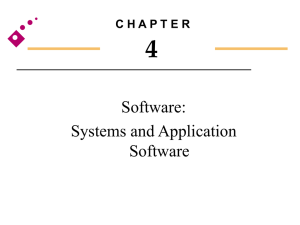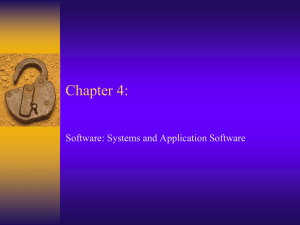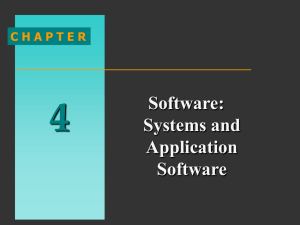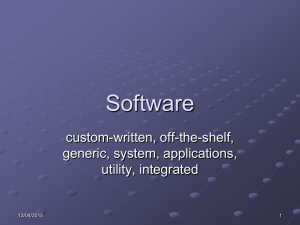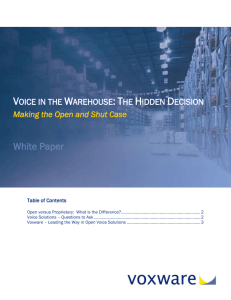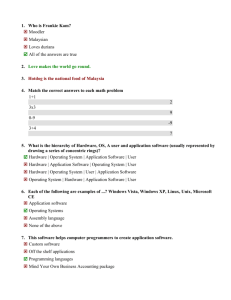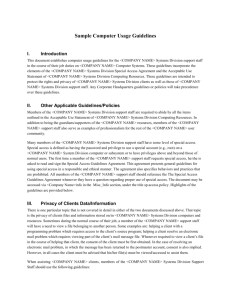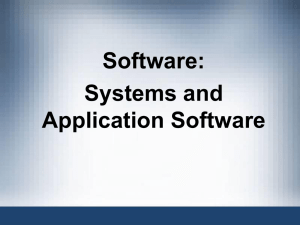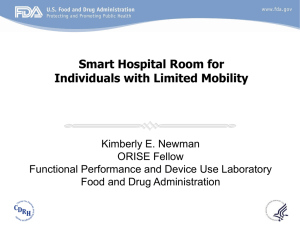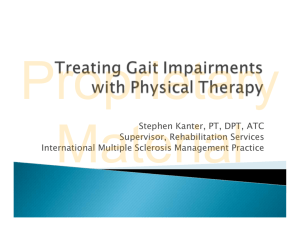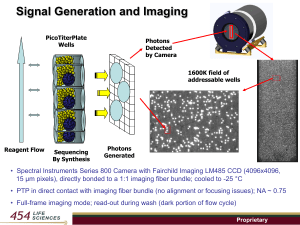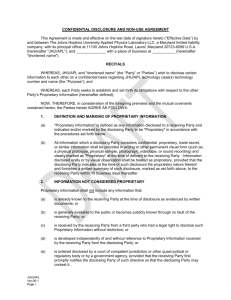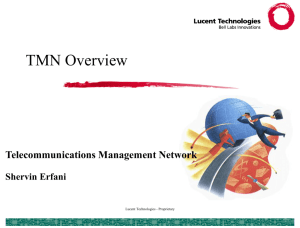Software
advertisement
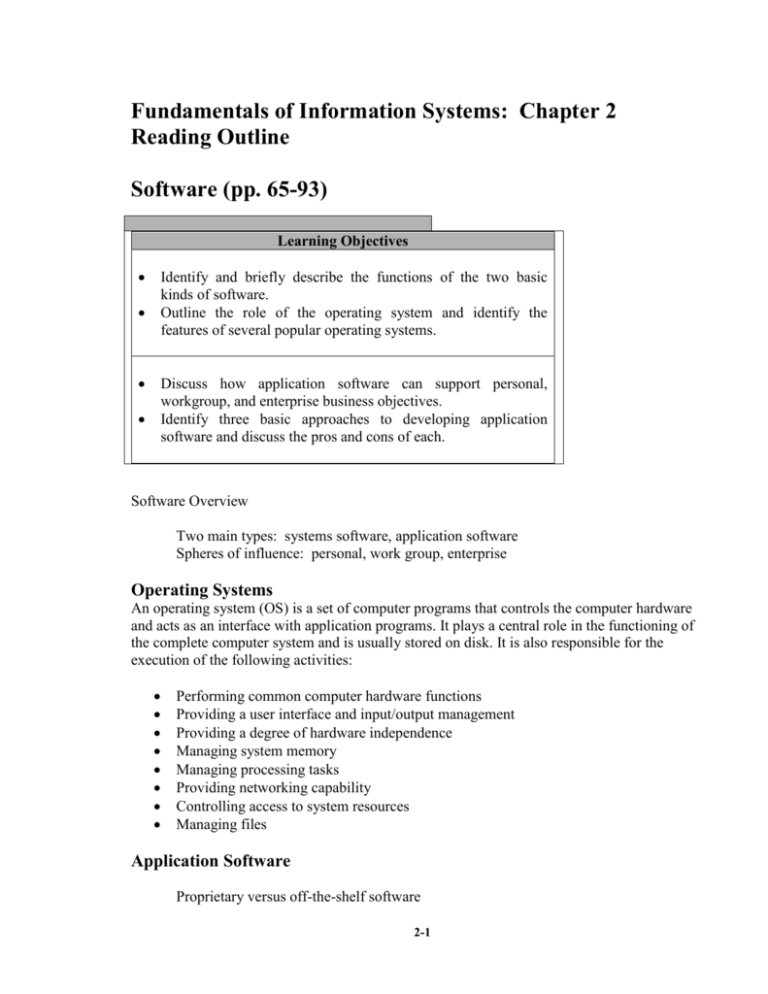
Fundamentals of Information Systems: Chapter 2 Reading Outline Software (pp. 65-93) Learning Objectives Identify and briefly describe the functions of the two basic kinds of software. Outline the role of the operating system and identify the features of several popular operating systems. Discuss how application software can support personal, workgroup, and enterprise business objectives. Identify three basic approaches to developing application software and discuss the pros and cons of each. Software Overview Two main types: systems software, application software Spheres of influence: personal, work group, enterprise Operating Systems An operating system (OS) is a set of computer programs that controls the computer hardware and acts as an interface with application programs. It plays a central role in the functioning of the complete computer system and is usually stored on disk. It is also responsible for the execution of the following activities: Performing common computer hardware functions Providing a user interface and input/output management Providing a degree of hardware independence Managing system memory Managing processing tasks Providing networking capability Controlling access to system resources Managing files Application Software Proprietary versus off-the-shelf software 2-1 Advantages of Proprietary Software Development: Software more closely matches needs Development results are more controllable More flexibility in making changes Disadvantages of Proprietary Software Development: Development is generally longer It may be difficult for in-house system development staff to provide the required level of ongoing support and maintenance Greater risk of performance problems The purchase of off-the-shelf software also has its share of advantages and disadvantages; among these are: Advantages of Off-the-Shelf Software: Lower costs Lower risks Higher quality Disadvantages of Off-theShelf Software: Organization may be paying for features it doesn’t require Software may lack important features Work processes may need to be changed to match software Role of personal, workgroup, enterprise software applications Groupware Enterprise Resource Planning software Programming Languages Evolution of programming languages Key Terms Application program interface (API): The interface that allows applications to make use of the operating system 2-2 Application service provider (ASP): A company that provides software, end-user support, and the computer hardware on which to run the software from the user’s facilities Application software: The programs that help users solve particular computing problems Command-based user interface: A user interface that requires that text commands be given to the computer to perform basic activities Computer programs: The sequences of instructions for the computer Contract software: The software developed for a particular company Enterprise resource planning (ERP): A set of integrated programs that manage a company’s vital business operations for an entire multisite, global organization Graphical user interface (GUI): An interface that uses icons and menus displayed on screen to send commands to the computer system Off-the-shelf software: An existing software program that is purchased Operating system (OS): A set of computer programs that controls the computer hardware and acts as an interface with application programs Personal productivity software: The software that enables users to improve their personal effectiveness, increasing the amount of work they can do and its quality Programming languages: The sets of keywords, symbols, and a system of rules for constructing statements by which humans can communicate instructions to be executed by a computer Proprietary software: A one-of-a-kind program for a specific application, usually developed and owned by a single company Scalability: The ability to increase the capability of a computer system to process more transactions in a given period by adding more, or more powerful, processors Software bug: A defect in a computer program that keeps it from performing in the manner intended Software suite: A collection of single application programs packaged in a bundle Sphere of influence: The scope of problems and opportunities addressed by a particular organization Systems software: The set of programs designed to coordinate the activities and functions of the hardware and various programs throughout the computer system Time-sharing: The capability that allows more than one person to use a computer system at the same time User interface: The element of the operating system that allows individuals to access and command the computer system Workgroup application software: The software that supports teamwork, whether in one location or around the world 2-3
